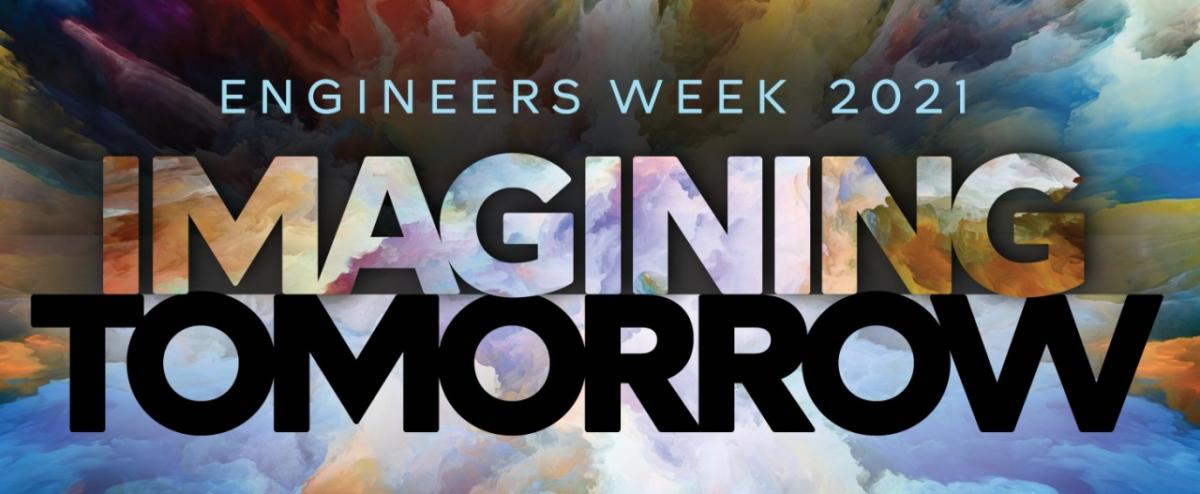Engineering, Perseverance, and Inspiration
By Jay Alexander | CTO at Keysight Technologies

Originally published on LinkedIn
Some interconnected themes seem to have converged in my brain this February. A framed certificate reminds me that 30 years ago this month I earned my Professional Engineering license back in Colorado. I remember that I had to drive to Denver on two different occasions for 8-hour exams, and also provide evidence of completing progressively more challenging assignments at work. Most electrical and computer engineering jobs don't require the PE credential, but I thought preparing for the exams would be a good challenge prior to heading off to graduate school, which I did after having worked at HP for 5 years.
Engineers Week is occurring as I write this, and it is sponsored by the National Society of Professional Engineers, so that is the first connection. Engineers Week was started in 1951, and is "dedicated to ensuring a diverse and well-educated future engineering workforce by increasing understanding of and interest in engineering and technology careers." Supporting interest in engineering and technology careers and STEM programs more generally has long been important to Keysight, going back to the early years of Hewlett-Packard. That's the second connection. Engaging in those efforts has been a source of great joy for me, and just yesterday my colleague Ee Huei Sin and I were part of a podcast with the leadership at ECEDHA, the Electrical and Computer Engineering Department Heads Association. We've been partnering with that organization and its work to advance university ECE programs for many years. And that is just one example. All told, Keysight employees are engaged in hundreds of STEM-related events around the world each year, including Introduce a Girl to Engineering Day, MathCounts, Keysight After School, and many more. It's fun and also critically important work. The world needs more technical professionals to address current and future challenges and opportunities, and there are so many ways for people in these careers to apply their skills and make a contribution. It takes perseverance to get from early interest to job-ready university or technical school graduate, and that's where these programs can help.
An incredibly exciting example of technical contributions has been on public display this month in NASA's Mars mission, whose Perseverance rover landed safely on the red planet last week. Perfect timing heading into Engineering Week made it the third connection for me. There is a great 3-minute video on the landing, and numerous photos and other information are being published daily. It's so great seeing the team in mission control jump for joy when the craft touched down. Those are some happy technical professionals and they are justifiably proud of their efforts. Perseverance indeed.
Photos from the surface show a landscape not so different from places here on Earth such as the American southwest. I just have to keep reminding myself they're from a planet that is currently 130 million miles away from us. I can't wait for the helicoptering to start.
The fourth connection here is that February is Black History Month, providing many opportunities to honor and celebrate achievements often made in the face of adversity and in many cases requiring tremendous amounts of perseverance. Those achievements span all professions and areas of impact, and they provide so much inspiration. At Keysight, our Employee Network for Underrepresented Minorities has been spotlighting some great Black figures from the technology world (thanks ENUM!), and we've been engaging with HBCUs such as Hampton University to support the next generation, as part of the work Huei Sin and others on our team are doing.
For me, thinking about the space program and Black History Month always brings to mind another connection: the inspiring life of Katherine Johnson, who made pioneering contributions at NASA and whose story was featured in the book Hidden Figures by Margot Lee Shetterly, which I highly recommend. (The movie based on the book is well done, but as is often the case, the book is even better.) There is a wealth of information about Katherine Johnson on the NASA website, including the story and photos published the day of her passing last February at age 101. She was a mathematician and a tireless STEM advocate throughout her life, and the space program wouldn't be where it is today without her dedicated and innovative work. She was an awesome individual. I just love the photo of her below, taken during a NASA celebration of her 98th birthday.
So those are some connections for me as we near the end of February. My thanks to everyone advancing STEM education around the world, everyone applying technical skills to great missions on Earth and in space, and everyone working to increase inclusion and diversity – in technical fields and in all fields. February is a nice nexus for these endeavors this year, but of course they're important every single day.

